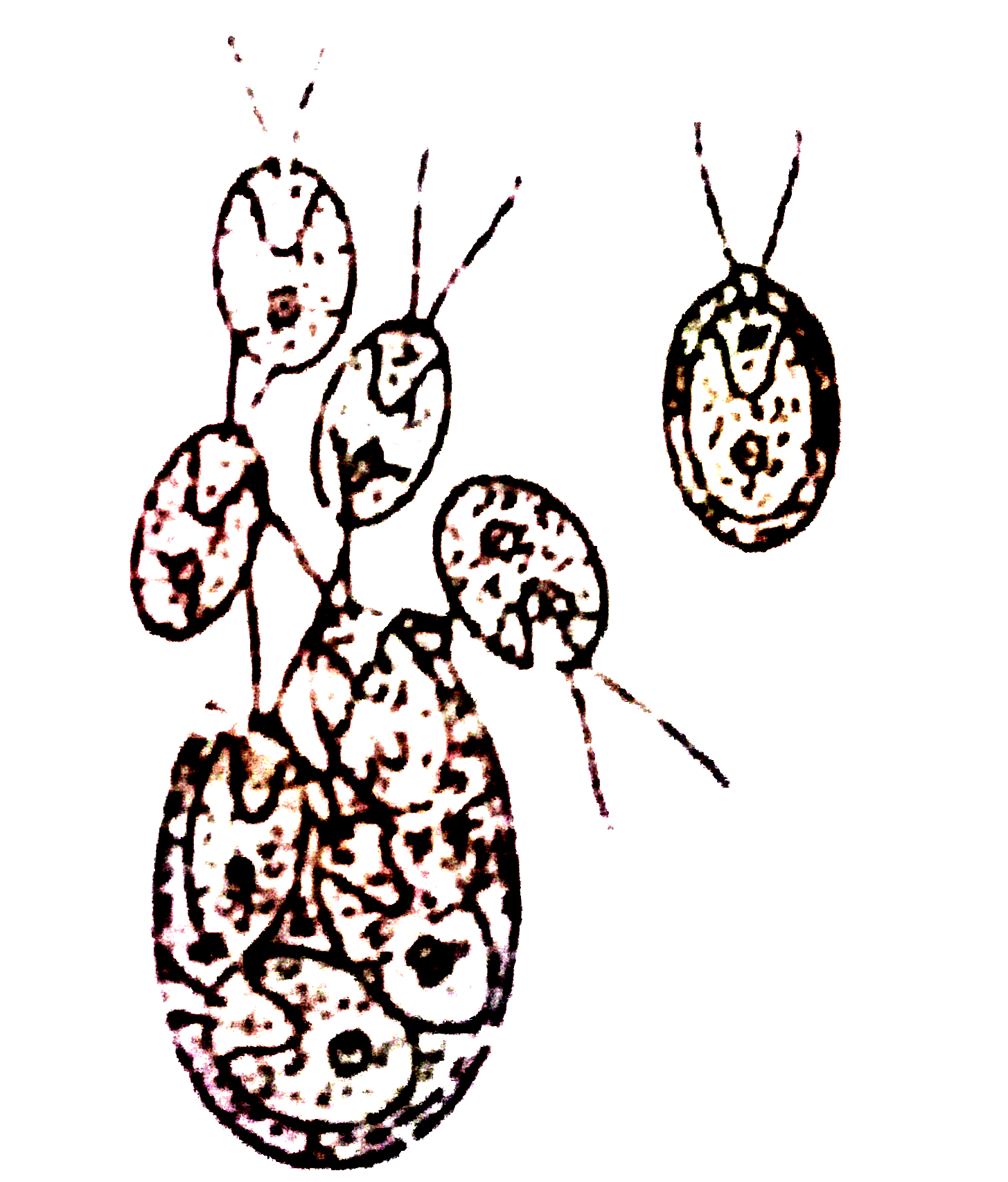"Pollen grains are protected by a mucilaginous covering and having a specific gravity." This is characteristic of which type of pollination
(a) Anemophily
(b) Entomophily
(c) Hydrophily
(d) Zoophily
Anemophily
Entomophily
Hydrophily
Zoophily.
The correct Answer is:C
To determine which type of pollination is characterized by pollen grains that are protected by a mucilaginous covering and have a specific gravity, we need to analyze the options provided.
1. Understanding the Question: The question states that pollen grains have a mucilaginous covering and a specific gravity. We need to identify which type of pollination this characteristic belongs to.
2. Analyzing the Options:
- (a) Anemophily: This type of pollination is mediated by wind. Pollen grains in wind-pollinated plants are usually lightweight and not covered by mucilage, as they need to be easily carried by air currents.
- (b) Entomophily: This type of pollination is mediated by insects. Pollen grains in insect-pollinated plants may have some adaptations for attachment to insects, but they do not typically have a mucilaginous covering.
- (c) Hydrophily: This type of pollination is mediated by water. Pollen grains in aquatic plants often have a mucilaginous covering to prevent them from getting wet and to help them remain buoyant in water. This is consistent with the characteristics mentioned in the question.
- (d) Zoophily: This type of pollination is mediated by animals other than insects. While some adaptations may be present, the specific characteristic of a mucilaginous covering is not typical for this type of pollination.
3. Conclusion: Based on the analysis, the type of pollination characterized by pollen grains that are protected by a mucilaginous covering and have a specific gravity is (c) Hydrophily.
Final Answer:
(c) Hydrophily
- (a) Anemophily: This type of pollination is mediated by wind. Pollen grains in wind-pollinated plants are usually lightweight and not covered by mucilage, as they need to be easily carried by air currents.
- (b) Entomophily: This type of pollination is mediated by insects. Pollen grains in insect-pollinated plants may have some adaptations for attachment to insects, but they do not typically have a mucilaginous covering.
- (c) Hydrophily: This type of pollination is mediated by water. Pollen grains in aquatic plants often have a mucilaginous covering to prevent them from getting wet and to help them remain buoyant in water. This is consistent with the characteristics mentioned in the question.
- (d) Zoophily: This type of pollination is mediated by animals other than insects. While some adaptations may be present, the specific characteristic of a mucilaginous covering is not typical for this type of pollination.
(c) Hydrophily
Topper's Solved these Questions
- NO IDEABOOK - DINESH PUBLICATION ENGLISHCHAPTER - NO IDEAEXERCISE - Check Your Grasp
32 Videos
- NO IDEABOOK - DINESH PUBLICATION ENGLISHCHAPTER - NO IDEAEXERCISE - Brain Teasers
37 Videos
- MOLLUSCABOOK - DINESH PUBLICATION ENGLISHCHAPTER - MOLLUSCAEXERCISE - CYG
10 Videos
- ORGANISMS AND THE ENVIRONMENTBOOK - DINESH PUBLICATION ENGLISHCHAPTER - ORGANISMS AND THE ENVIRONMENTEXERCISE - CYG
17 Videos
Similar Questions
Knowledge Check
Which one of the following ways of acquiring nutrients is not characteristic of fungi?
(a) Saprophytic
(b) Parasitic
(c) Autotrophic
(d) HeterotrophicASaprophyticBParasiticCAutotrophicDHeterotrophic
Water vascular system is the characteristic of which group of the following:
(a) Porifera (b) Ctenophora (c) Echinodermata (d) Chordata
View SolutionWater vascular system is the characteristic of which group of the followings
(a) Porifera (b) Ctenophora
(c) Echinodermata (d) Chordata
View SolutionWater vascular system is the characteristic of which group of the following:
(a) Porifera
(b) Ctenophora
(c) Echinodermata
(d) Chordata.
View SolutionHow many of the following statements (s) is/are correct about pollination ?
I. In Vallisneria and Zostera , the flowers emerge above the level of water and are pollinated by insects or wind.
II: In most of the water pollinated species , pollen grains are protected from wetting by a mucilaginous covering.
III. Pollination by water is quite rare in flowering plants and is limited to about 30 genera, mostly dicotydons.
View SolutionConsider the following statements with respect to hydrophily and select the right choice
(i) It is quite rare in flowering plants.
(ii) Pollen grains are protected by mucilaginous covering.
(iii) In some plants, pollens are released inside the water.
(iv) Flowers are very colourful but without nectar.
View SolutionWhich type of WBCs are most abundant in the blood of rabbit and other vertebrates?
(a) Acidophils
(b) Basophils
(c) Lymphocytes
(d) Neutrophils
View SolutionPronoba moth is specific pollinator of:
(a) Evening primrose
(b) Ophrys
(c) Yucca
(d) Commelina
View Solution

